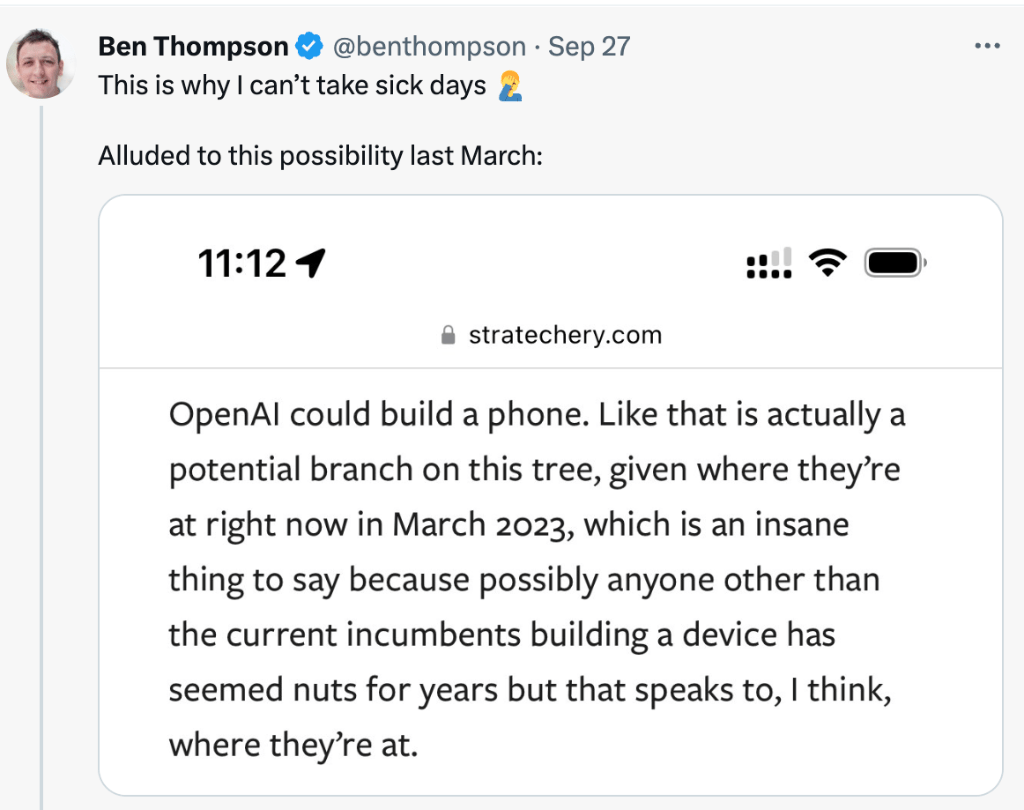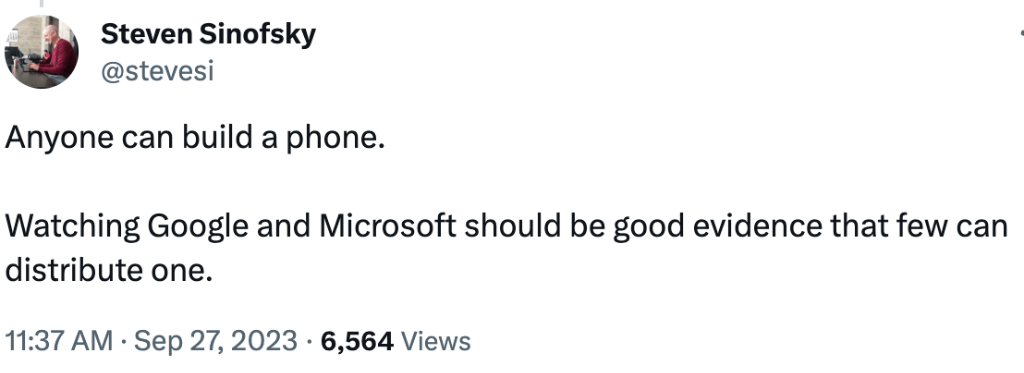Home >Technology peripherals >AI >Masayoshi Son invests US$1 billion, OpenAI and Ive cooperate to create 'iPhone in the AI era'
Masayoshi Son invests US$1 billion, OpenAI and Ive cooperate to create 'iPhone in the AI era'
- WBOYWBOYWBOYWBOYWBOYWBOYWBOYWBOYWBOYWBOYWBOYWBOYWBforward
- 2023-09-29 12:45:051098browse
What will the "iPhone in the AI era" look like? OpenAI is beginning to brew cross-generation "AI hardware" with its technology as its core.
According to media reports, OpenAI CEO Sam Altman and former Apple chief designer Jony Ive, known as the "Father of the iPhone", are in in-depth negotiations with SoftBank CEO Masayoshi Son and plan to establish a joint venture aimed at building "AI iPhone of the era”
According to three people familiar with the matter, Sun Zhengyi, Altman and Ive plan to use the talents and technologies of the three companies to create a company focusing on artificial intelligence hardware. SoftBank expected to invest more than $1 billion
Informed sources said that Altman has hired Ive to develop consumer electronics in the AI era with OpenAI technology as the core. They are discussing future AI hardware at Ive’s studio in San Francisco and are still finalizing the design. Early stages of:
Although the two parties have not yet reached any agreement, they are very serious about discussions on artificial intelligence hardware. It could take several months to formally announce a joint venture. It could still be several years before any hardware products produced by the company actually hit the marketIve is known as one of Apple’s core figures. He left Apple in 2019 and founded his own design studio LoveFrom. Working with OpenAI provides Ive with an opportunity to create a way to interact with computers that relies less on screens.Sun Zhengyi also participated in some discussions, and ARM may assume the role of chip design and provide financial support
Some media analysts said that considering Ive’s participation, this product is most likely to be some kind of consumer electronics, such as a redesigned mobile phone:
OpenAI is building its own operating system, which may be a direction. It can be imagined that this operating system, as the core of the terminal device, has built-in elements of the artificial intelligence native operating system, thereby improving the user experience and reducing dependence on Apple and Android systems
In this regard, the famous analyst Ben Thompson quoted an article he wrote in March on X (original name: twitter). The article discusses the changes in AI terminal products and predicts the future after the rise of OpenAI: OpenAI can build a mobile phone.
 There are many analysts who are skeptical about this device. Former Microsoft Windows Division President Steven Sinofsky responded to Ben Thompson by saying that while anyone can make a phone, few can successfully launch a product. Just look at Google and Microsoft.
There are many analysts who are skeptical about this device. Former Microsoft Windows Division President Steven Sinofsky responded to Ben Thompson by saying that while anyone can make a phone, few can successfully launch a product. Just look at Google and Microsoft.
 Some netizens also speculated that OpenAI is likely to create a hardware product that serves as an
Some netizens also speculated that OpenAI is likely to create a hardware product that serves as an
:
They already have the foundation of the underlying software. Developing an AI assistant hardware product in the next 2 to 4 years is a natural progressionAt the same time, as one of the largest investors in hardware startup Humane, Altman may consider AI-driven wearable devices as the development direction of OpenAI
In July this year, Humane released the Ai Pin, which is a "smart and connected wearable device that can be attached to clothing and utilize various sensors for environmental and situational computing interactions." It is a stand-alone device that Software platform harnesses the power of AI to deliver innovative personal computing experiences.
This artificial intelligence arms race is constantly broadening application scenarios and paying more attention to matching user experience and usage scenarios. From Meta's Quest MR headset to Amazon's Echo smart speakers, they are all regarded as consumer terminals with great potential in the artificial intelligence era, but none of them have created the miracle of the iPhone
Technology is being integrated into various scenarios
AI large models are going through a critical iteration period, rapidly evolving from "toys" to "tools". The clear trend is for smart terminals to be connected to large AI models. In the near future, a hundred flowers will bloom on the downstream application side
On September 28, Meta released its blockbuster head-mounted display Quest 3 and new smart glasses during Connect, its annual developer conference. It also announced that all its apps are supported by artificial intelligence (AI) chatbots.
Media comments said that compared with the previous generation Quest 2, Quest 3 is not just a virtual reality (VR) head display, but more like a mixed reality (MR) head display that incorporates augmented reality (AR), similar to Vision Pro. Some comments pointed out that Quest 3 marks Meta’s transition from virtual reality (VR) to mixed reality (MR)
Meta official said: The visual effects of Quest 3 are breathtaking, as if you can truly touch the world around you
On September 20, Amazon held its most important new product launch conference this year. Alexa voice assistant, new speakers Echo, computers, glasses, TVs and other hardware, which are supported by generative artificial intelligence (AI) functions, were unveiled together.
Apple released its first MR headset Apple Vision Pro this year, with excellent hardware specifications. It uses M2 computing and R1 sensing dual chips, and is equipped with a silicon-based OLED 3p pancake display solution with a single-eye 4k resolution. Users can interact efficiently in real time simply through voice, vision and touch, which also means that we have officially entered the era of spatial computing
In order to gain a foothold in the era of artificial intelligence, OpenAI has to start thinking about integrating technology into scenarios and laying out the future of artificial intelligence hardware
The above is the detailed content of Masayoshi Son invests US$1 billion, OpenAI and Ive cooperate to create 'iPhone in the AI era'. For more information, please follow other related articles on the PHP Chinese website!
Related articles
See more- What does AI era mean?
- What skills do managers need to master in the AI era? 74% of executives believe it is emotional intelligence
- OpenAI text generation 3D model has been upgraded to complete the modeling in seconds, which is more usable than Point·E
- Meitu Wu Xinhong: I hope more people will use the imaging productivity tools in the AI era
- The AI era drives demand for smartphones, and SK Hynix's high-performance memory becomes the key core

